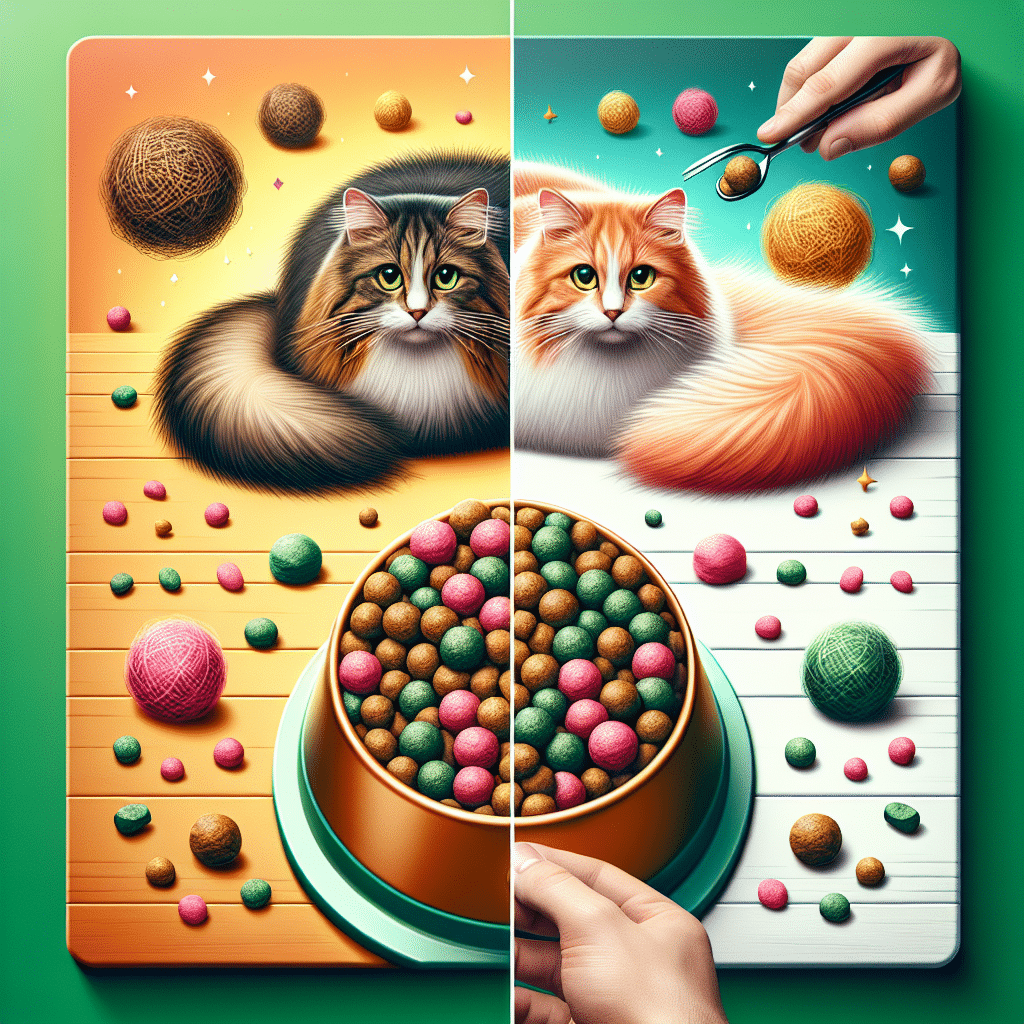Understanding Hairballs in Cats
Hairballs are a common issue for many cats, particularly long-haired breeds. They occur when cats groom themselves and ingest loose hair, which can accumulate in their stomachs and form a compact ball. While occasional hairballs are normal, frequent occurrences can indicate underlying health issues or an inappropriate diet. Understanding how to manage hairballs effectively begins with selecting the right cat food for hairball control.
The Role of Diet in Hairball Management
Diet plays a critical role in the formation and prevention of hairballs. Providing a diet that promotes healthy digestion, minimizes hair accumulation, and enhances coat condition can significantly reduce hairball problems. High-fiber cat foods specifically designed for hairball control are widely recommended as they help move hair more effectively through the digestive tract.
Key Ingredients for Hairball Control
When looking for the best cat food for hairball control, consider the following key ingredients:
-
Fiber Sources: Look for foods that contain soluble and insoluble fiber, such as psyllium seed husks, beet pulp, or cellulose. These fibers support digestive health and help push hair through the gastrointestinal tract more smoothly.
-
Omega Fatty Acids: Foods rich in omega-3 and omega-6 fatty acids promote healthy skin and coat, reducing excessive shedding. Ingredients like fish oil, flaxseed, and chicken fat not only support coat health but also enhance overall nutrition.
-
Natural Digestive Aids: Ingredients like probiotics and prebiotics help support a healthy gut flora, improving digestion and nutrient absorption. Look for cat foods that include these beneficial components.
-
High-Quality Proteins: Ensure that the cat food has high-quality protein sources, such as chicken, turkey, or fish. High protein levels can help support muscle maintenance and overall health, allowing for better grooming habits.
Top Picks for Cat Food for Hairball Control
-
Hill’s Science Diet Hairball Control
- Formulated with a mix of fibers, this cat food promotes healthy digestion and reduces hairball formation. It features high-quality protein to maintain muscle strength and antioxidants for overall well-being.
-
Royal Canin Hairball Care
- This food is specifically designed for cats prone to hairballs. It includes a special blend of fibers that facilitate the elimination of ingested hair and enhances coat health.
-
Purina Pro Plan Hairball Management
- Combining a balance of protein and fiber, this formula provides excellent nutrition while assisting in hairball reduction. It contains omega fatty acids for skin health and a formula designed to ease digestion.
-
Wellness CORE Grain-Free Hairball Control
- This grain-free option is rich in protein, making it ideal for maintaining a healthy weight while minimizing hairball issues. Its blend of fibers promotes healthy digestion and hair management.
-
Blue Buffalo Indoor Hairball Control
- Specifically formulated for indoor cats, this recipe includes a blend of dietary fibers that aid in hairball control, rich proteins for muscle maintenance, and antioxidants for a strong immune system.
Feeding Recommendations for Optimal Hairball Control
To maximize the benefits of hairball control cat food, consider the following feeding tips:
-
Regular Feeding Schedule: Establish a consistent feeding routine to regulate your cat’s eating habits and reduce the chances of overeating or rapid consumption.
-
Hydration: Ensure your cat has constant access to fresh water. Proper hydration is essential for digestion and helps prevent hair accumulation in the stomach.
-
Gradual Transition: When switching to a new cat food, do so gradually over a week to avoid gastrointestinal upset. Start by mixing the new food with the old, slowly increasing the proportion of new food.
-
Suitable Portion Sizes: Follow the feeding guidelines provided on the packaging based on your cat’s weight and activity level. This can help avoid obesity, which can exacerbate hairballs.
Additional Tips for Hairball Prevention
Dietary changes are only one aspect of hairball prevention. To further minimize hairball formation, consider the following strategies:
-
Regular Grooming: Frequent brushing can significantly reduce the amount of loose hair that cats ingest during grooming. Aim for a routine that suits your cat’s coat type—daily for long-haired breeds and weekly for short-haired varieties.
-
Hydration and Moisture: Incorporate wet food into your cat’s diet to increase moisture intake. Cats typically do not drink enough water on their own, and wet food can aid digestion and overall health.
-
Exercise: Encourage physical activity through play. Regular exercise helps maintain a healthy weight and can promote better digestion, contributing to fewer hairballs.
-
Health Checkups: Regular veterinary checkups can identify underlying health problems that may contribute to excessive hairballs. Ensure your cat is up-to-date on vaccinations and discuss any hairball concerns with your vet.
Signs Your Cat May Need Veterinary Attention
While occasional hairballs are normal, if your cat shows signs of distress, such as persistent vomiting, lethargy, or a loss of appetite, it’s important to seek veterinary care. These symptoms may indicate more serious conditions, such as gastrointestinal blockages, which require prompt attention.
Conclusion
Selecting the right cat food for hairball control is essential in managing this common concern for many cat owners. By focusing on high-quality ingredients, fiber content, and regular grooming, you can significantly reduce hairball occurrences and support your cat’s overall health. Pay attention to your cat’s unique needs, and always consult with a veterinarian for tailored dietary advice.
